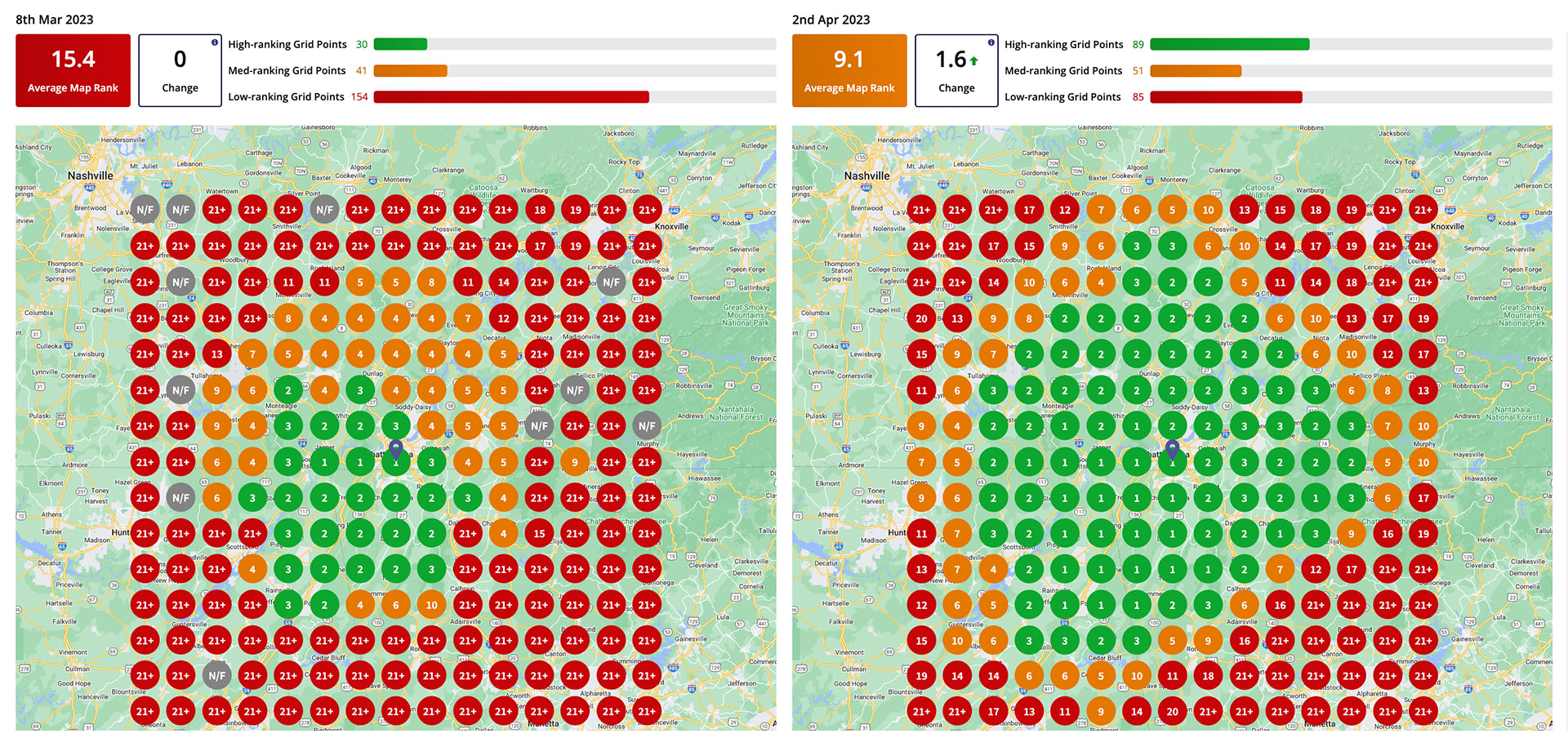As businesses compete for visibility and revenue online, a solid local SEO strategy has become more essential than ever. In this context, local search heat maps can provide businesses with valuable insights into user behavior that can help them optimize their website for better engagement and higher search engine rankings. By analyzing these heat maps, businesses can improve their SEO performance, enhance user experience, and drive more leads and revenue to their business.

What are Heat Maps?
Heat maps are graphical representations of data that use color to show where users are clicking and how they are interacting with a website. These maps can be used for a variety of purposes, including website optimization, user experience design, and SEO.
Heat maps are an important tool for SEO because they provide insights into user behavior on a website. By analyzing user behavior, businesses can identify areas of their website that are not performing well and optimize them for better engagement. Additionally, heat maps can be used for keyword research and identifying user intent.
What are Local Search Heat Maps?
Local search heat maps are a specific type of heat map that shows which search results on a local search engine results page (SERP) are receiving the most clicks. The warmer colors indicate areas of high engagement, while cooler colors indicate areas of low engagement. By analyzing the heat map, businesses can identify which search results are the most appealing to users, and which ones are not attracting much attention.
Local search heat maps are created using specialized software that tracks user behavior on local SERPs. When a user searches for a local business or service, the software records which search results the user clicks on and how long they spend on each page. This data is then used to create a visual representation of user engagement on the SERP.
One of the key benefits of local search heat maps is that they provide businesses with insights into user intent. By analyzing which search results are receiving the most clicks, businesses can determine what users are looking for when they search for their products or services. This information can be used to create content and optimize landing pages that better align with user needs, ultimately driving more traffic and revenue to the business.
Heat maps can also help businesses stay ahead of the competition by identifying areas where they are outperforming their competitors. By comparing their heat map to those of their competitors, businesses can see where they are ranking higher and adjust their optimization strategy to maintain their advantage.
Using Local Search Heat Maps for SEO
Local search heat maps can provide valuable insights for improving a website’s SEO performance. By analyzing the heat map, businesses can identify which search results are the most appealing to users and adjust their SEO strategy accordingly.
Here are some of the ways local search heat maps can be used for SEO:
-
Identify Keywords that are Performing Well
Local search heat maps can help businesses identify which keywords are performing well and which ones are not. By analyzing the heat map, businesses can see which search results are ranking high for specific keywords and adjust their keyword strategy accordingly.
For example, if a heat map shows that a specific search result is receiving a lot of clicks for a particular keyword, businesses can focus on optimizing that page for that keyword. On the other hand, if a keyword is not performing well, businesses can consider adjusting their content to better target that keyword.
-
Improve Meta Descriptions and Titles
Meta descriptions and titles play an important role in attracting users to click on a search result. Local search heat maps can help businesses identify which search results are the most appealing to users and adjust their meta descriptions and titles accordingly.
If a heat map shows that a particular search result is receiving a lot of clicks, businesses can analyze the meta description and title of that search result and adjust their own meta descriptions and titles to make them more enticing.
-
Identify User Intent
Local search heat maps can also help businesses understand user intent by identifying which search results are getting the most attention. By analyzing the heat map, businesses can see which search results are most relevant to users and adjust their SEO strategy accordingly.
For example, if a heat map shows that users are clicking on search results that are focused on a specific topic, businesses can adjust their content to better target that topic and improve their search engine rankings.
Choosing the Right Software
Creating effective heat maps can be a complex process that requires the use of accurate and reliable software. For businesses that lack the necessary expertise and resources, it may be best to hire digital marketing experts to handle this task.
There are several software options available that provide these maps. However, in order to use these tools effectively, businesses need to have a deep understanding of local SEO and the factors that influence search engine rankings. This is where a digital marketing expert can be invaluable.
By hiring a company who is well versed in digital marketing, businesses can ensure that they are using the right software and analyzing their data effectively. These experts can help businesses identify the most important local search ranking factors and optimize their website and content accordingly. They can also provide ongoing analysis and support to ensure that the business stays ahead of the competition and maintains high search engine rankings over time.
While it is possible for businesses to create heat maps on their own, hiring experts is often the best way to ensure that they are getting the most accurate and actionable insights. With the right expertise and support, businesses can use local search heat maps to improve their local SEO performance and drive more leads and revenue to their business.
Conclusion
Local search heat maps are a valuable tool for improving a website’s SEO performance. By analyzing the heat map, businesses can identify which search results are the most appealing to users, adjust their keyword strategy, and improve their meta descriptions and titles to increase click-through rates. In addition, local search heat maps can help businesses understand user intent and optimize their website for better engagement and higher search engine rankings.
It’s important for businesses to choose the right software to create effective heat maps and to keep up with the latest trends and technologies in SEO to stay ahead of the competition. By using local search heat maps and other SEO tools, businesses can make data-driven decisions to improve their SEO performance.
In conclusion, local search heat maps are a useful tool for businesses that want to grow and improve their SEO performance. By analyzing user behavior and search engine results, businesses can optimize their website for better engagement and higher search engine rankings, ultimately driving more traffic and revenue to their business.
To see how Spectruss can grow your business and make you more money, schedule a FREE 30 min consultation today!
Check out more marketing tips from Spectruss here.








